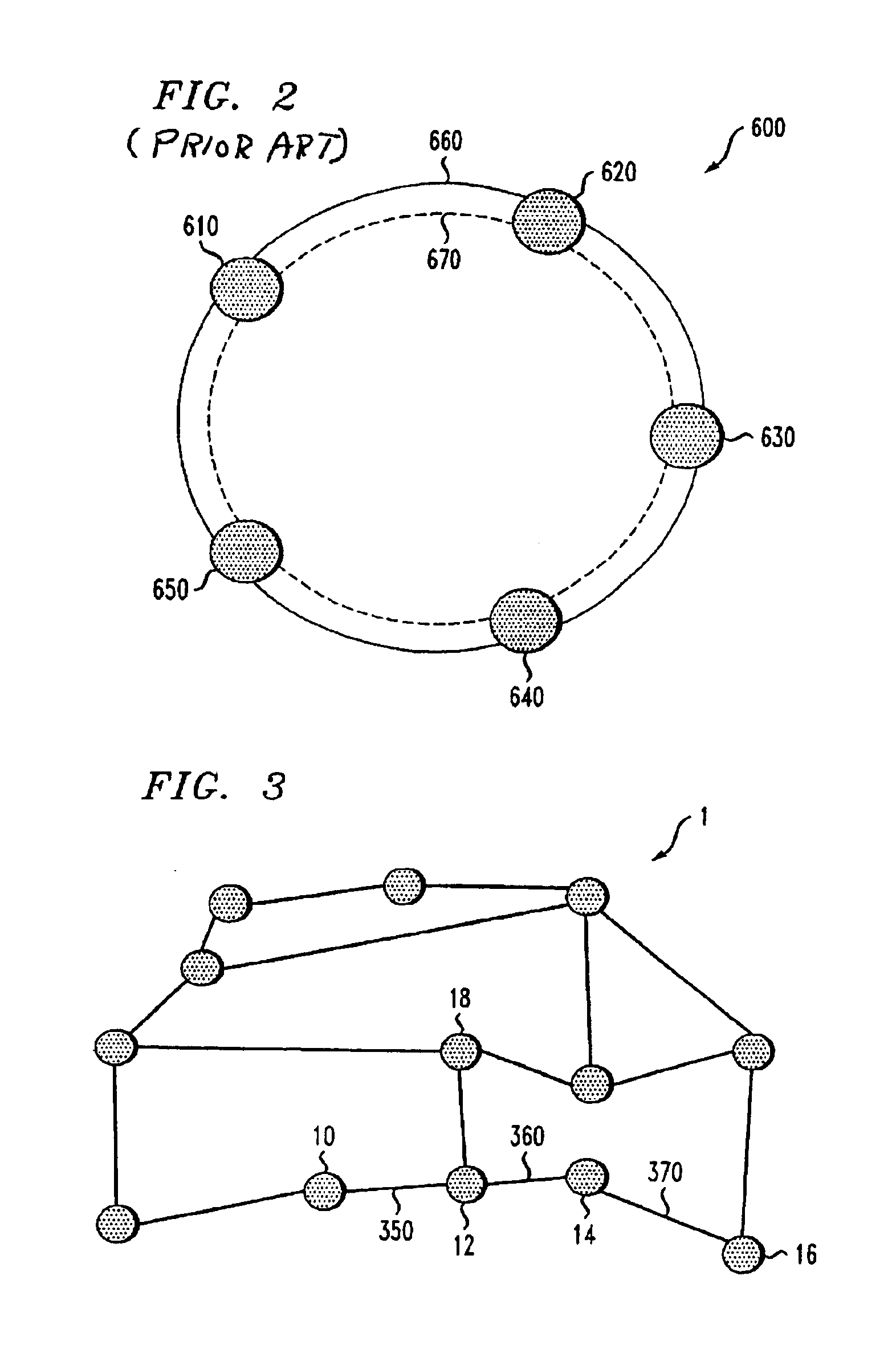Hierarchical telecommunications network with fault recovery
- Summary
- Abstract
- Description
- Claims
- Application Information
AI Technical Summary
Benefits of technology
Problems solved by technology
Method used
Image
Examples
Embodiment Construction
Overview
The present invention is directed to a hierarchical communications network allowing for fast network recovery while making efficient use of network components. An exemplary embodiment of the present invention divides network nodes into two categories (levels), where high-level nodes (“L2” nodes), a minority of the nodes, are primarily responsible for error recovery, and low-level nodes (“L1” nodes) perform minimal error recovery operations. High-level nodes generally have the capacity to perform routing on traffic at high levels of granularity; low-level nodes generally allow such high granularity traffic to pass through the nodes without any routing or manipulation. This architecture allows for recovery from network errors (e.g., the failure of a link) and routing in general to be performed more quickly, using less equipment and without centralized coordination.
In an exemplary embodiment, recovery equipment is concentrated in a small set of nodes (L2 nodes), lowering the am...
PUM
 Login to View More
Login to View More Abstract
Description
Claims
Application Information
 Login to View More
Login to View More - R&D
- Intellectual Property
- Life Sciences
- Materials
- Tech Scout
- Unparalleled Data Quality
- Higher Quality Content
- 60% Fewer Hallucinations
Browse by: Latest US Patents, China's latest patents, Technical Efficacy Thesaurus, Application Domain, Technology Topic, Popular Technical Reports.
© 2025 PatSnap. All rights reserved.Legal|Privacy policy|Modern Slavery Act Transparency Statement|Sitemap|About US| Contact US: help@patsnap.com



